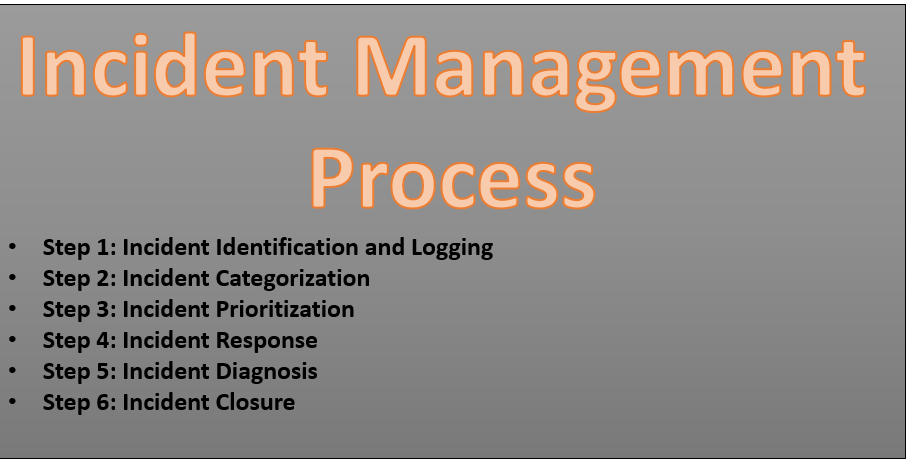ITIL Incident Management Process explained.
An Incident Management Process surrounds around the steps and protocols that an organization follows to recover from an unforeseen disruption in its services.
The Significance of a Standardized Incident Management Workflow
Incidents can have a profound impact on companies, with service unavailability or downtime resulting in substantial costs. According to industry research, 98% of organizations acknowledge that one hour of downtime incurs a cost exceeding $100K, while 81% state that such an outage costs their business over $300K. Gartner’s study further highlights that system or service downtime can lead to expenses of up to $300K per hour.
Establishing a transparent incident management workflow is crucial for expediting incident resolution and curbing associated costs. Implementing a well-defined incident management process, aligned with best incident management processes and practices, enhances the efficiency of IT support teams. The advantages of a well-structured incident management process workflow encompass:
- Swifter incident resolution and improved Mean Time to Resolution (MTTR)
- Cost reduction and minimized impact on business revenue
- Enhanced collaboration and internal and external communication during incident management process.
- Facilitation of continuous improvement and learning
- Elevated customer experience”
Incident Management process and ITSM Overview
- The incident management process, commonly derived from industry best practices, is adopted and tailored by organizations to suit their specific requirements. Before delving into incident management, it’s essential to clarify some key terms.
- An incident refers to any unplanned event disrupting normal service operations or affecting service quality, ranging from service downtime to a sluggish web server.
- It’s crucial to distinguish incidents from problems; incidents are unplanned events, while problems are the root causes behind incidents. Incident management focuses on resolving the issue and restoring normal service, while problem management identifies the underlying root causes to prevent future incidents.
- ITSM (IT Service Management) encompasses processes and tasks for comprehensive IT service delivery. At its core, ITSM advocates delivering IT as a service, with incident management process being one of its key practices helping industries reduce downtime.
- ITIL (IT Infrastructure Library) serves as a detailed playbook/framework of best practices, aiming to align IT services with business needs. 80% of the IT companies now prefer ITIL certified professionals as customer advocates.
Distinguishing ITIL 4 from ITIL 3 Incident Workflows – Exploring the Variances
- While both ITIL 3 and ITIL 4 share the overarching objective of proficient and consistent incident management, their approaches diverge significantly.
- ITIL 3 outlines a structured incident management workflow with 26 prescribed processes. These processes guide the development and operation of services across five key categories: service strategy, service design, service transition, service operation, and continual service improvement.
- In contrast, ITIL 4 takes a less rigid stance on processes, advocating for the adoption of best practices adaptable to an organization’s specific needs. It embraces a holistic perspective, considering not only the specific steps in development and operations but also incorporating contextual factors that influence response strategies. For instance, it incorporates best practices related to talent management and training into the framework.”
ITIL Incident Management Workflow: A Step-by-Step Guide
While learning the ITIL framework, we’ll talk about a comprehensive overview of effective ticket handling within incident management. While many frameworks share similar concepts, the emphasis in incident management lies in having a robust process and adhering to it.
Step 1: Incident Identification and Logging
- Incidents can be identified by anyone, either through employee reports, end-user observations, or monitoring systems.
- Reports are received through various channels, such as automatic alerts, text messages, emails, or phone calls.
- The service desk team records and categorizes incidents, distinguishing between incidents and service requests.
- Key details are captured in a ticket, including the person’s name and contact, date and time of the incident report, incident description, and a unique Incident ID for tracking.
Step 2: Incident Categorization
- Efficient incident categorization is vital for streamlining the logging process and enhancing incident resolution.
- Each incident is assigned a category and sub-category, facilitating sorting and prioritization.
- Accurate categorization aids in tracking incidents over time, identifying trends for problem management or training, and presenting valuable insights to the leadership.
Step 3: Incident Prioritization
- Prioritization is crucial to identify and respond to incidents promptly.
- Factors considered for prioritization include the number of impacted users, potential financial and security impacts, and implications for SLA compliance.
- Incidents are classified as low, medium, or high priority based on their impact on users, business operations, and service delivery.
Step 4: Incident Response
- Incident response involves a series of steps, starting with the initial diagnosis.
- Initial diagnosis relies on diagnostic manuals, troubleshooting runbooks, and knowledge bases for a preliminary understanding of the issue.
- If the first responder can’t resolve the problem, it escalates to the next level.
- Incident Escalation and SLA management involve passing complex issues to higher-level technical support while ensuring SLA compliance.
- Investigation and diagnosis occur at various stages, involving specialized resources and collaboration with other departments.
- Incident resolution and recovery follow the correct diagnosis, ensuring the restoration of service operations.
- Incident closure, managed by the service desk team, involves confirming resolution satisfaction with the reporter before closing the incident.”
Key Roles in IT Incident Management
While the fundamentals remain consistent, organizations tailor roles and responsibilities based on their unique incident management needs. Nonetheless, the most prevalent IT incident management roles in every organization generally include:
- End-user/User: The stakeholder who initially encounters and reports the issue.
- Incident Manager or Incident Commander: The individual with overall responsibility and authority for incident management.
- Tech Lead: The senior technical responder tasked with restoring service operations.
- Communications Lead: A representative from customer success or PR teams, responsible for internal and external communication regarding incident progress.
- Tier 1 Service Desk: The front-line service team handling common incidents like password resets and Wi-Fi problems.
- Tier 2 Service Desk: Individuals with advanced incident management knowledge working on escalated incidents.
- Tier 3 Service Desk: Specialists and subject matter experts possessing advanced knowledge in specific domains within the IT infrastructure.
Learning: Incident Retrospectives
Effective incident management extends beyond issue resolution, emphasizing analysis and learning for better future preparedness. An incident retrospective, or ‘postmortem,’ is a document detailing incident specific, contributing factors, response team members, resolution steps, and contextual information to provide a comprehensive story.
Incident retrospectives should maintain a blameless approach, discouraging finger-pointing and encouraging organizations to address systemic problems and solutions productively. This approach fosters an environment where everyone feels safe sharing creative ideas and solutions without fear of retaliation.
The analysis involves not only documenting the retrospective but also conducting a meeting with stakeholders. This meeting ideally occurs within 24 hours of incident resolution while the context is fresh. The goal is to identify areas for improvement in services, processes, or tools. Asking questions and turning shared insights into learning opportunities is crucial. Documenting the discussion ensures that valuable lessons learned are retained for future reference.”
Also read related article on Incident Priority Matrix




1 comment